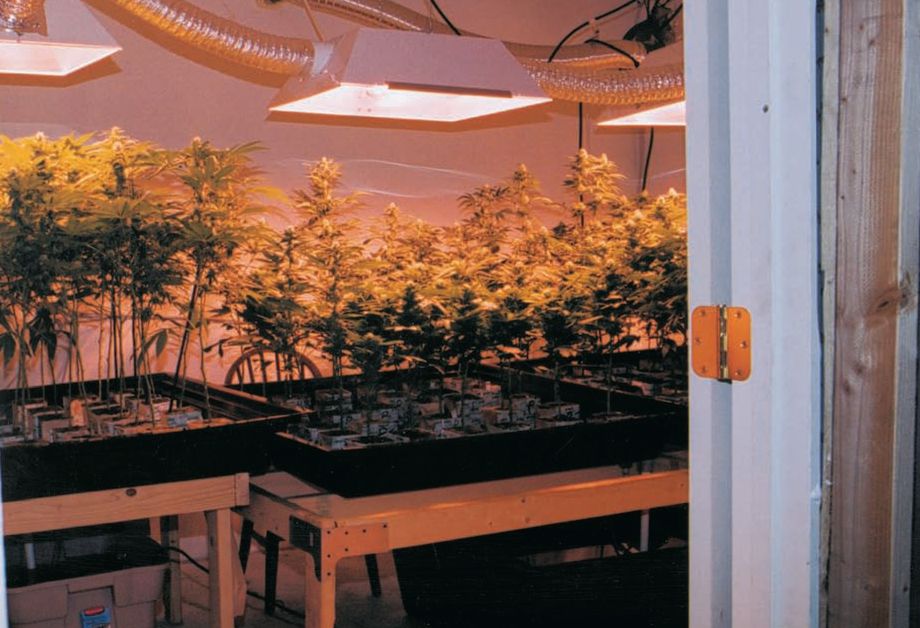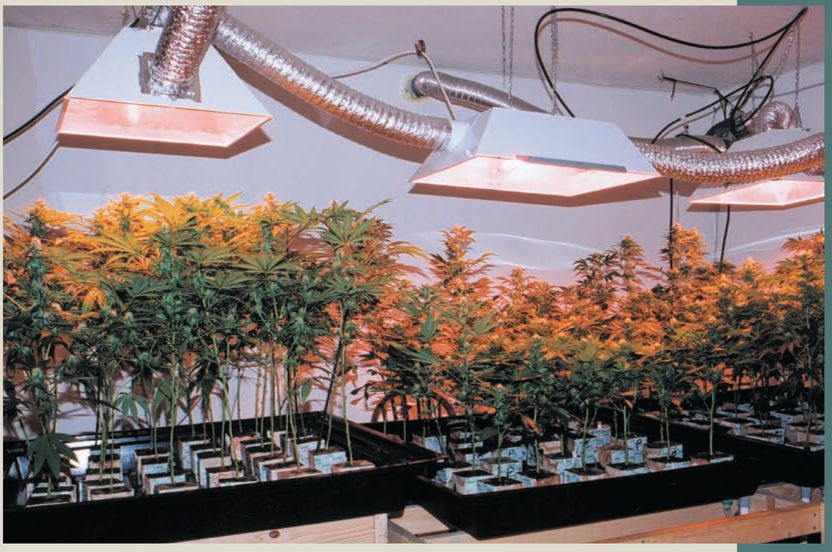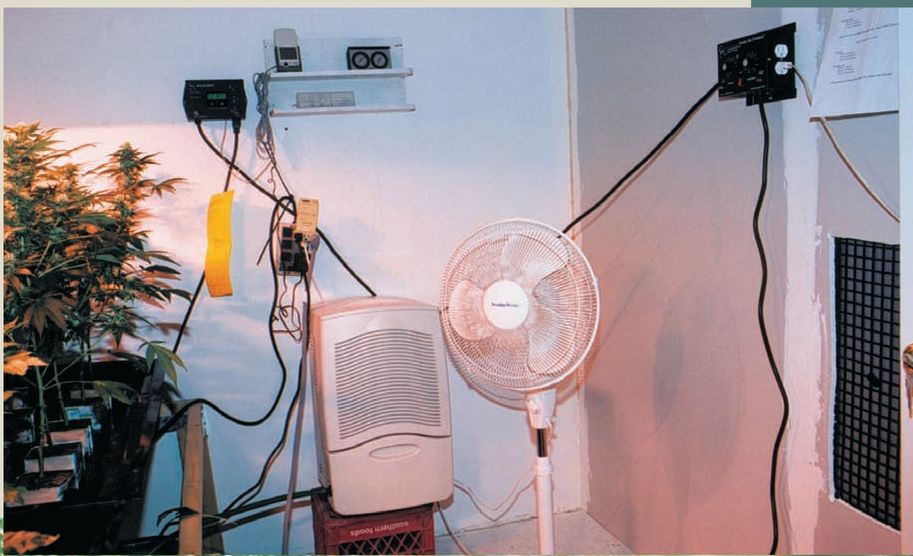Medical Success
Purple indicas have ended their vertical growth at about 13 inches. This popular variety produces heavy, chunky buds with a typical pure indica high.
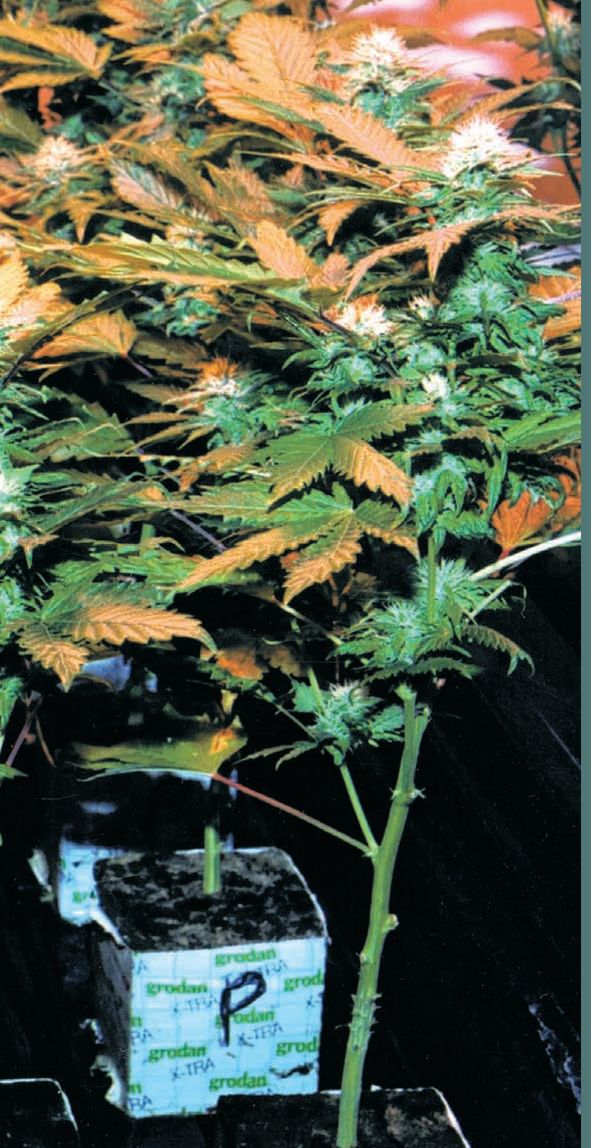
California’s Proposition 215, passed by voters in 1996, legalized cultivation of medical marijuana by patients and caregivers with a recommendation from a doctor. With no clear guidelines from the State Attorney General, interpretation of the law has been left to county law enforcement. In some places the police have taken to arresting growers and letting the courts settle it. This has backfired in a few counties, where juries have repeatedly hung or given a resounding “not guilty”. Several areas stand out for truly enlightened and progressive policies. Oakland has a policy of 32 square feet indoors with a maximum of 72 plants; San Francisco has a flexible policy based on patients’ needs and tolerating caregivers; and Mendocino county voters approved a proposition allowing 25 plants for personal use. Unfortunately this proposition does not have the force of law because it contravenes existing state laws. However, the district attorney seems to be respecting its intent. In Sonoma County, where many people grow outdoors, medical patients are allowed up to 99 plants in 100 square feet.
Fortunately, Maya lives in Oakland. She and her boyfriend both use marijuana medically with a doctor’s prescription. Maya has chronic pain as a result of an automobile accident. Her boyfriend had adult onset insomnia, although he was only in his twenties. Their doctor at the health plan where they were enrolled empathized but refused to write a recommendation for marijuana. At a friend’s suggestion they saw another doctor, who looked at their medical records, gave them both relevant physicals, and wrote them the required notes. They took their notes to the Oakland Cannabis Buyers Cooperative, the organization functioning as agent of the City of Oakland for the issue of Medical Cannabis ID Cards to patients. They received their cards within minutes. They had been legal for about a year when the opportunity to grow arose.
This is Maya’s story.
My boyfriend and I share a large live/work space with another couple. We had another housemate but he moved out to join the real world across the Bay. Under California’s Prop 215, the Medical Marijuana Initiative, and local Oakland regulations, each patient is allowed to grow in an area of 32 square feet and is allowed up to 72 plants. There is no limit on the number of lights. Since we are all patients with cards from the city-authorized Oakland Cannabis Buyers Co-op, it seemed like a good idea to get a garden started.
The doors to the room swing open revealing a highly productive medical garden.
I had been an outdoor guerilla gardener for many years but it was so much work that it hardly seemed worth the effort for the yield and I couldn’t live in the city. Then there was the arduous task of packing in the material, the hassle of staying in the field as harvest approaches and the disappointment of small harvests. After my accident, I definitely couldn’t make the effort required. Compared to the outdoor problems, the hydroponic set-up is so convenient and easy that you can grow soft and fat and lazy. The yields are higher and I like playing God with the plant.
A vote was taken and, instead of dealing with another roommate, we decided to make space available to another kingdom of life. We prepared to open our home to some babies available for adoption at one of the medical marijuana dispensaries. We read a few books and spoke with several indoor growers about their experiences. After a lot of research we chose the rockwool/ebb-and-flow system. Rockwool was readily available and disposable, and the system is easy to put together, maintain, and clean between crops.
A friend with construction experience helped build a wall, made frames for the trays, installed the CO2 unit, and began the electrical work, which still needs completion.
The clones from the Dispensary were the best I have ever seen. They had strong roots, were ready to grow and were full of life. The strains we picked were AK-47 and Champagne, a total of 120 plants, well under the limit set by the Oakland guidelines.
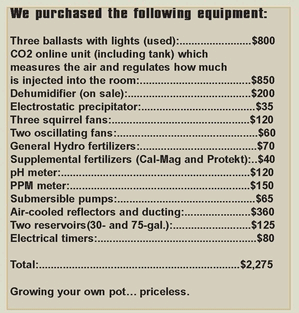
When we started growing, the plants immediately began to show a magnesium deficiency. We decided to add Cal Mag after a friend told us that the Oakland water is too pure to use without supplements. Fertilizer formulas are configured to “average” water that has plenty of dissolved salts, including magnesium and calcium. Oakland water falls well below this average. We also added Protekt, a silicon supplement, to help strengthen the plants – researchers believe it gives plants resistance to stress. Within a week the plants returned to health. We had already purchased a pH meter to keep the plants at 6.3 pH – usually we have to add pH Down to the water. The two supplements had increased the amount of soluble salts to the water but we needed to figure out what was going on. This called for a ppm (parts per million) meter, which measures the amount of dissolved solids in the water. The meter showed that the supplements had raised the ppm to about 550 from 100 ppm. We decided to add half as much GH formula as we had initially. This brought the water-nutrient solution to about 1150 ppm. Because they can support the plant without watering for 24 hours, we decided on 4-inch cubes. We water three times a day; when the lights come on, in the middle of the cycle, and again just before the lights go off. Each tray is lit using a 1000-watt HPS light in a horizontal air-cooled reflector. Intake and outtake fans keep the air moving so that the lights are well ventilated.
Two tables hold three 4’ x 4’ horticultural trays. The trays are set up as ebb-and-flow tables. The smaller reservoir serves a single tray and the larger one supplies the other two. Water is pumped from the reservoir for 10 minutes at a time. An overflow drain handles excess water pumped to the garden and the water drains slowly out of a smaller gap. The tray on the left holds Max 49s; the middle tray holds the shorter purple indicas in front and the taller AK-47s in the rear. The tray on the far right holds a mix of marked hybrids.
Under California’s Prop 215, the Medical Marijuana Initiative, and local Oakland regulations, each patient is allowed to grow in an area of 32 square feet and is allowed up to 72 plants.
The control section: oscillating fans on either side of the room keep the air circulating.
Max 49, a sativa-indica backcross, tops out at 30 inches. It produces a very fat, potent bud with sativa qualities.
The clones from the Dispensary were the best I have ever seen. They had strong roots, were ready to grow and were full of life. The strains we picked were AK-47 and Champagne, a total of 120 plants, well under the limit set by the Oakland guidelines.
This is our second crop in the room. Our first crop (AK-47 and Champagne) yielded 3 1/2 pounds. Champagne was the heavier producer and had very dense buds that weighed a lot but I preferred the AK-47, a moderate producer that has a very heady high. This time we are growing the Max 49, Northern Lights X Big Bud, White Widow and a purple indica. We anticipate a wide variety of medicine will be available to us with this crop.
I usually check the room twice a day to make sure the pumps and timers are working, and that the plants are happy. I check the temperature, humidity, CO2 and reservoir levels. I think a certain number of hours need to be spent staring at these amazing plants – it’s sort of like being out in the garden, but indoors.





